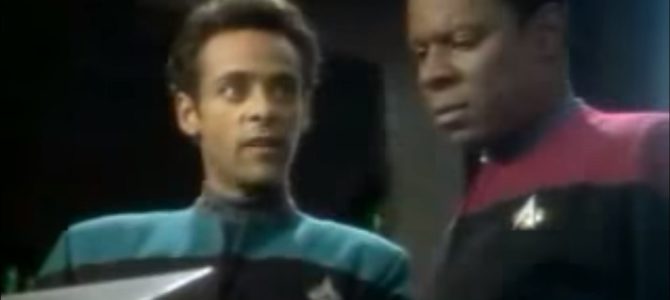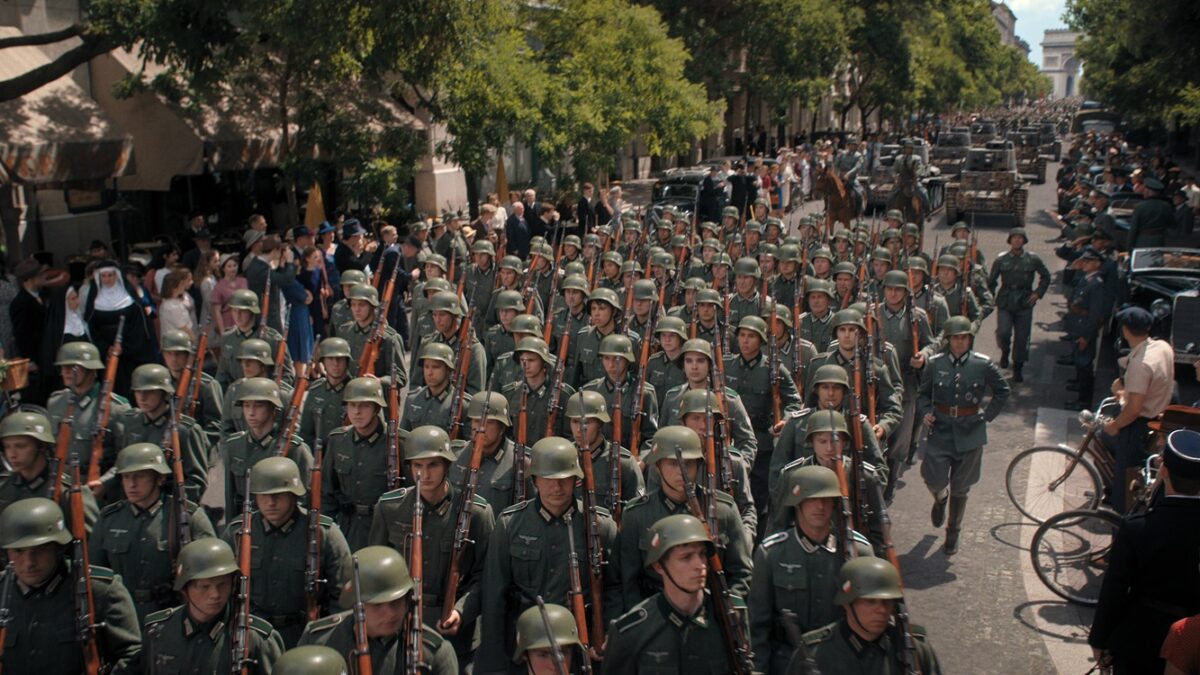
Science fiction and fantasy have gone mainstream in the past few years, and sci-fi television is finally getting the respect it has long been due. When “Star Trek: Deep Space Nine” was on TV, though, almost the only Emmys that ever went their way, despite the good acting and writing, were for makeup. That was the case with the fifth episode of DS9’s first season, “Captive Pursuit,” which won mainly for the alligator-like prosthetic makeup applied to one of the Gamma Quadrant aliens introduced here for the first time (the theme song also won an award that year).
“Captive Pursuit” is an old-style Star Trek episode: seeking out new life and new civilizations (or, in this case, having them seek Starfleet out). It also gets at some interesting issues, including how to interact with foreign cultures, how much of their way of life we must accept in the name of diversity, and how much we should reject as a violation of the universal rights of sentient beings. Discussions like these play out today among real-life human cultures, and have no easy answer.
The Odd Couple
The Gamma Quadrant alien in question (played by Scott MacDonald) pilots a small ship through the wormhole, the first native of that quarter of the galaxy to arrive at the station. His craft is badly damaged. In light of the emergency, Sisko dispenses with the usual first-contact rules and tasks O’Brien with helping the newcomer repair his ship. He enters it but finds no sign of the alien, who can turn himself invisible. Eventually, he reveals himself and says he is “Tosk,” although O’Brien cannot figure out if Tosk is his species or his personal name.
O’Brien can tell immediately that Tosk is on the run, but when the alien denies it, he lets it go and sets about helping to repair the unfamiliar vessel. The chief tries to befriend the new man, too, but they are a study in contrasts: where O’Brien is chatty and quick with a joke, Tosk is extremely serious and baffled by the Irishman’s craic. It makes for some humorous exchanges that belie the serious themes to be addressed later in the episode.
At the bar, Tosk marvels at the amount of time humans and others at DSP spend not working. Quark tries to tempt him with a visit to the holosuites for an adventure of one sort or another, but Tosk declines, saying mysteriously that “I live the greatest adventure one could ever desire,” and refusing to say more on the subject.
Later, Odo catches Tosk snooping around the station and questions him. Tosk demands to be released from the brig so he may “die with honor,” but Odo holds him there and tries figure out what Tosk is up to.
Enter the Hunters
Tosk’s situation begins to become clearer when three more aliens, not of the same species as Tosk, beam onto the station and pursue Tosk, phasers blazing. Like fox hunters trampling a peasant’s crops, they run through the station, heedlessly destroying anything between them and Tosk. For the second time in the episode, first contact with a new species did not go according to the book.
The Hunters (we never learn the name of their race or nation) extract Tosk from the brig alive, and express their disappointment at the poor quality of the hunt. Finally, the facts of Tosk’s life are revealed: they are hunters and Tosk is their prey.
Tosk, like all Tosks (they seem to have no personal names) are bred for the hunt, hence their efficient physiology and abilities. Sisko finds the entire thing appalling, but both hunter and hunted seem to take great pride in their roles. The “great adventure” Tosk claimed to live was, in fact, a 24th-century “Most Dangerous Game.”
Sisko demands that no such hunt take place in his jurisdiction, and the Hunters agree that from now on the wormhole will be considered out-of-bounds in their bloody game. With that, Sisko agrees to release Tosk into the Hunters’ custody. The crew clamors to let him claim asylum, but Tosk declines to do so. As disgraced as he is by being captured, he would find it lowlier still to break the rules of the game. (This exchange also breaks one of Gene Roddenberry’s odder rules: that the crewmembers should not be in conflict with each other.)
Live and Let Die
O’Brien can’t abide this, and in the guise of escorting Tosk and the Hunters off Deep Space Nine, breaks him out and helps him flee within the station’s twisting service conduits. Together they fight the Hunters and get back to Tosk’s ship, where the hunt resumes. Everyone—hunter, hunted, and DS9 crew—is happy.
Sisko officially admonishes O’Brien for disobeying orders and interfering in foreign affairs, but declines to comment when O’Brien notes it was odd that Sisko and the crew did not impede their progress. O’Brien knows the station’s schematics and understands that Sisko let him get away with it.
The case of Tosk has no true parallel in real-life human society—an oppressed people who truly enjoy being oppressed, hunted, and killed. But it serves as a thought experiment on how far to push what, to us, seem like universal ideals. Before the episode began, every character on DS9 would have considered hunting an intelligent being for sport to be a cruel crime; by the end, they’re officially reconciled to it.
The debate may have occurred to the writers, given the time in which they lived. When the Cold War raged, the Americans and Soviets both conducted a realist foreign policy, allying with groups they may not have ordinarily condoned. By 1993, when this episode debuted, many in the United States began to consider an approach to the world that was more committed to universal ideals. Now that the war was won, there was far less need to ally with dictators and criminals.
That approach saw its zenith in the invasion of Iraq, when leading voices on the idealist right called liberal democracy the birthright of all mankind. It didn’t work out exactly as planned, and the pendulum has swung nearly all the way back to realism.
O’Brien frees one Tosk, but only to live and fight another day. There is no talk of liberating the Tosk people from bondage or even of ending the blood sport in which they are the prey. It’s an unsatisfying ending, in some ways, but it evokes the debates of the times, and points out the contrast between the realism of DS9 versus the idealism of previous Star Trek series.









